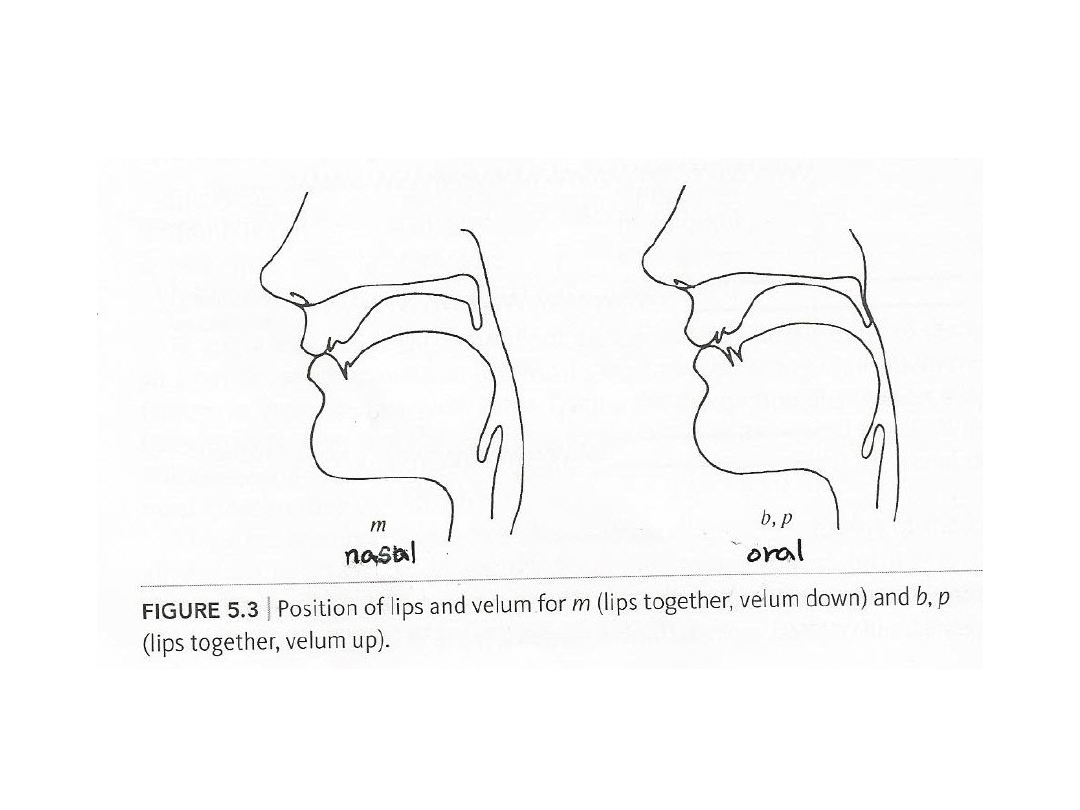
Fricatives(마찰음): In the production of some continuants, the airflow is so severely obstructed
that it causes friction. Fricatives have obstructed friction.
- [f], [v], [ɵ], [ð], [s], [z], [ʒ], [ʃ], [h]
(For more explanations about this, refer to page 201-202)
Affricates(파찰음): These sounds are produced by a stop closure followed immediately by
gradual release of the closure that produces an effect characteristic of a frica-
tive.
- [
ʤ], [ʧ]
Liquids(유음): In the production of the liquids, there is some obstruction of the airstream
in the mouth, but not enough to cause any real construction or friction. - [l], [r]
Glides(전이음): These sounds are produced with little obstruction of the airstream. - [y], [w]
a. Glides are always followed directly by a vowel and do not occur at the ends of words.
(cf. Words ending in y or w like say and saw end in a vowel sound.)
b. [y] or [j] is a palatal glide; the blade of the tongue is raised toward the hard palate in
a position almost identical to that in producing the vowel sound [i] in the word beat[bit]
c. The glide [w] is produced by both rounding the lips and simultaneously raising the back
of the tongue toward the velum. It is thus a labio-velar glide.

Approximants(접근음): Approximants are close to the sonority value of vowels. Thus
the approximants has no actual friction and the most sonority value among conso-
nants.
- [l], [r], [j], [w] central approximants: [r], [j], [w]
lateral approximants: [l]
Trills(전동음): A trilled
r is produced by rapid vibrations of an articulator.
An alveolar trill, as in the Spanish word for ‘dog’, perro, is produced by vibrating
the tongue tip against the alveolar ridge.
Flaps(설탄음): - A flap is produced by a flick of the tongue against the alveolar ridge.
It sounds like a very fast d. It occurs in Spanish in words like pero meaning
‘but.’
- It may also occur in British English in words such as very. Its IPA symbol is [
ɾ].
Most American speakers produce a flap instead of a [t] or [d] in words like
writer and rider, which then sound identical and are spelled phonetically as
[
raɪɾər]
Clicks(설타음): These “exotic” sounds are made by moving air in the mouth between vari-
ous
articulators. The sound of disapproval often spelled tsk is an alveolar click that
occurs in several languages of southern Africa such as Zulu.

(c) Voiced and Voiceless Sounds:
- Voiceless sounds occur when the vocal cords are apart so that air flows freely through
the glottis into the oral cavity.
- Voiced sounds occur when the vocal cords are together and the airstream forces its way
through and causes them to vibrate.
- The voiced/voiceless distinction is very important in English. This phonetic property
distinguishes the words in pairs.
rope/robe fate/fade rack/rag wreath/wreathe
fine/vine seal/zeal choke/joke peat/beat
(d) Aspirated and Unaspirated sound: [p], [t], [k]
Voiceless sounds fall into two classes depending on the timing of the vocal cord closure.
Aspirated Sound In pit, the vocal cords remain open for a very short time after the
lips come apart to release the p---a brief puff of air escapes before
the glottis closes.
e.g.) pin, tick, kin [ph], [th], [kh]
Unaspirated Sound In spit, the vocal cords start vibrating as soon as the lips open.
The p is unaspirated.
e.g.) spot, still, skin [p], [t], [k]


For phonetic symbol and English spelling correspondences, refer to pages 214-215 for sure.
You will be able to learn and make sure of many related examples as well as conso-
nants’ sounds
symbols and vowels’ sounds symbols.
9<3>